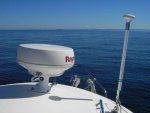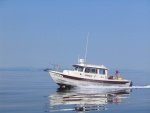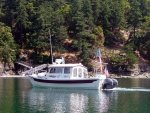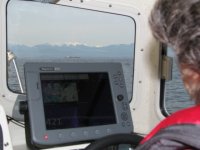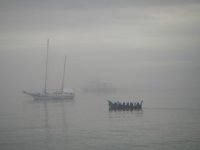Agree, that you should never use a Radar on its "Auto" settings. This is something which I have advocated in the past. Many of our boats do not have broad band radars--and units such as the excellent Furuno 16XX and 17XX series will not pick up small craft--including Pangas, rowboats Kayaks etc.
The reason I mention this is that one cannot assume that radar will pick up floats, wood, kayaks etc.
Tom, 1/8 mile is just not a practical range to be running a radar, except when entering a harbor, or in very close quarter conditions.
We usually the run the Radar at 6 miles and then down to 3 miles. If you are running at 1/8 mile or less, then you can easily be run over by a larger and faster boat.
There is a good reason that larger yachts and commercial ships have two radars--one run at longer range, and one at short range.
Although the broad band are getting better at longer ranges, the earlier units were not as good a conventional radar over 6 miles. Granted that some of the new broad band radars are spectacular at short ranges.
The other issue is to define the HD (such as the multi function Furuno Sitex, and Garmin, vs the true broad band, which have been mostly Navico products.
Another issue is sea clutter vs small craft--and it does not take much sea clutter to obscure small craft. One cannot assume that there will not be significant sea state during fog or decreased visibility.
Many times you will see a consistent echo from a small craft, but not on each sweep. You have to then concentrate on that echo, and sort it out from the sea clutter.
You may remember that "EarthRace" ran over a Panga off Guatemala, killing at least one fisherman. If you go to the Kayak forums there are several stories of kayaks being run over by powerboats which had radar on.
For Kayaks, small craft, floating objects etc, the FLIR imaging is better than Radar. But one always has to be on the look out!

